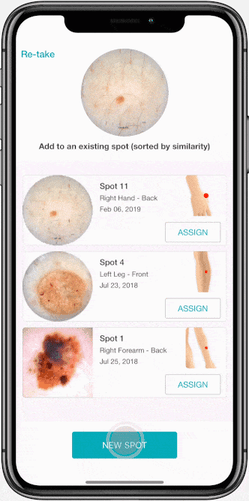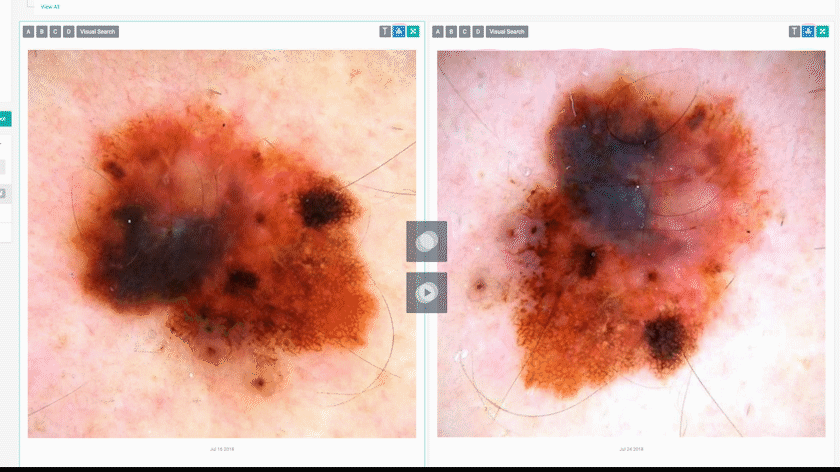by
The DermEngine Team on Apr 11, 2019
Dermatologists are already stretched thin, with 623 specialists serving Canada’s population of over 37 million and many rural areas left without a professional at all.1 How can DermEngine’s artificial intelligence-based tools assist medical professionals quickly and effectively serve high-priority patients?
As the population continues to grow, the number of new dermatologists entering the field to replace their retiring predecessors remains at par, meaning that the same number of specialists must serve a continuously growing number of patients. Adding to this serious problem is the fact that the number of melanoma cases is on the rise, with a projected increase of 7.7% by the end of 2019.2
Acting as an intelligent assistant to help support dermatologists in the fight for the early detection of skin cancer, DermEngine is equipped with a variety of resources designed to support medical professionals at every step of the care cycle for maximized efficiency:
MoleMapping
When the patient arrives for their first appointment, the physician’s assistant or nurse will capture total body images of the patient, which will automatically sync with the DermEngine platform. Here, the MoleMapping tool readily identifies all spots within an image and assigns them to the patient’s virtual body map for a completely digitized documentation process.
MoleMatching
Upon the next visit, the PA or nurse (or other clinical imager) will take follow-up total body images using the DermEngine app. From here, the MoleMatching tool will compare the images and help identify any changes that may have developed over time to then prioritize the spots that require more attention and further review based on amount of change.
SmartSnap
Next, the clinical imager can use Smart Snap to capture dermoscopic images of the most suspicious spots. When capturing the first image, Smart Snap will recognize the visual features of the spot and suggest which existing spot profile it should belong to; instead of scrolling or searching for the correct spot, the image can be assigned in seconds. Once complete, serial imaging can be performed for that spot and subsequent lesions as needed.
Image Registration & Evolution Tracker
Once dermoscopic images are assigned to the correct spot, the dermatologist can then run them through Image Registration to automatically rotate them to the same orientation. The Evolution Tracker can then overlay all dermoscopic images in a slideshow to help the dermatologist better identify any subtle changes over time.
Visual Search
As a final tool to assist in making a clinical decision, the healthcare provider can submit the image to Visual Search. DermEngine’s AI algorithms will search through a library of thousands of pre-labelled pathology images to provide the most visually similar images along with information relating to their cases. This process allows the medical professional to make an evidence-based decision regarding the necessary steps for that particular spot.

Results
Rather than be limited by a lack of resources, dermatologists have the opportunity to harness the latest innovations of artificial intelligence (AI) towards enhanced imaging, analysis, documentation, and ultimately the early detection of skin cancer and other conditions. Although a relatively new candidate in the field of dermatology, research suggests that artificial intelligence in healthcare is here to grow, with a projected value of $6.6 billion by 2021.3 Using these visionary tools puts your practice among industry leaders in providing dermatological services that have the greatest potential to achieve the number one priority in healthcare: saving patients’ lives.
-The MetaOptima Team
Would you like to stay updated on the latest news of MetaOptima and its intelligent dermatology software? Subscribe to our blog! If you're ready to experience the most advanced features available on DermEngine, request your demo today!

Sources
- https://legacy.cma.ca
- https://www.skincancer.org
- https://www.accenture.com






